Sustainable Development Solutions for the Medical Waste Problem Using Thermal Plasmas
Abstract
:1. Introduction
2. Experimental Set-Up and Procedures
2.1. Plasma Torch
2.2. Plasma Gasification Reactor
3. Results and Discussion
3.1. Plasma Jet Characteristics
3.2. Conversion Process and Fuel Type from Medical Waste Treatment
3.2.1. Energy from Pyrolysis Oil
3.2.2. Electricity from Diesel Oil
3.3. Economical Vision
4. Conclusions and Outlook
Funding
Institutional Review Board Statement
Informed Consent Statement
Data Availability Statement
Acknowledgments
Conflicts of Interest
Appendix A
References
- Nasser, E. Fundamentals of Gaseous Ionization and Plasma Electronics; Wiley-Interscience: New York, NY, USA, 1971. [Google Scholar]
- Raizer, Y.P. Gas Discharge Physics, 1st ed.; Allen, J.E., Ed.; Springer: Berlin/Heidelberg, Germany, 1991. [Google Scholar]
- Asghar, A.H.; Ahmed, O.B.; Galaly, A.R. Inactivation of E. coli using atmospheric pressure plasma jet with dry and wet argon discharges. Membranes 2021, 11, 46. [Google Scholar] [CrossRef]
- Asghar, A.; Galaly, A.R. The Effect of oxygen admixture with argon discharges on the impact parameters of atmospheric pressure plasma jet characteristics. Appl. Sci. 2021, 11, 6870. [Google Scholar] [CrossRef]
- Galaly, A.R.; Ahmed, O.B.; Asghar, H.A. Antibacterial effects of combined non-thermal plasma and photocatalytic treatment of culture media in the laminar flow mode. Phys. Fluids 2021, 33, 043604. [Google Scholar] [CrossRef]
- Asghar, A.H.; Galaly, A.R. The Influence of Different Plasma Cell Discharges on the Performance Quality of Surgical Gown Samples. Materials 2021, 14, 4329. [Google Scholar] [CrossRef]
- Galaly, A.R.; Dawood, N. Non-Thermal Plasma Treatment Coupled with a Photocatalyst for Antimicrobial Performance of Ihram Cotton Fabric. Nanomaterials 2022, 12, 1004. [Google Scholar] [CrossRef]
- Galaly, A.R. 16th Treatment of Wastes by Plasma Gasification in Makkah. 2016, pp. 293–319. Available online: https://drive.uqu.edu.sa/_/hajj/files/multaqa/143716.pdf (accessed on 25 May 2016).
- Galaly, A.R. 19th Treatment of Scrap Tires by Plasma Gasification in Makkah. 2019, Volume 19, pp. 294–315. Available online: https://drive.uqu.edu.sa/_/hajj/files/multaqa/143716.pdf (accessed on 12 July 2022).
- Ojha, A.; Reuben, A.C.; Sharma, D. Solid waste management in developing countries through plasma arc gasification. APCBEE Procedia 2012, 1, 193–198. [Google Scholar] [CrossRef]
- Sikhawar, V.; Hrabovsky, M.; Van Oost, G.; Pohořelý, M.; Jeremiáš, M. Progress in waste utilization via thermal plasma. Prog. Energy Combust. Sci. 2020, 81, 100873. [Google Scholar] [CrossRef]
- Galaly, A.R.; van Oost, G. Environmental and economic vision of plasma treatment of waste in Makkah. Plasma Sci. Technol. 2017, 19, 105503. [Google Scholar] [CrossRef]
- Galaly, A.R.; van Oost, G. Environmental and economic aspects of the plasma treatment of scrap tires to produce syngas and synthetic fuels in Saudi Arabia. IEEE Trans. Plasma Sci. 2021, 49, 522–534. [Google Scholar] [CrossRef]
- General Authority for Statistics, Kingdom of Saudi Arabia. 2019. Available online: www.stats.gov.sa/en (accessed on 12 July 2022).
- Ministry of Finance, Kingdom of Saudi Arabia. Report Performance Budget (1985 and 2018). Available online: https://www.mof.gov.sa/en/generalservcies/open-data/Pages/Home.aspx (accessed on 12 July 2022).
- Ministry of Environmental and Water Agriculture, Kingdom of Saudi Arabia. Available online: https://www.scribd.com/document/449567732/6-BAH-MEWA-KSA-NES-CEDA-Executive-Summary-v3-20180221-ENG (accessed on 12 July 2022).
- Department of Statistics. The Statistical Yearbook, No. 50; The Ministry of Economy and Planning: Jeddah, Saudi Arabia, 2018.
- U.S. Environmental Protection Agency. Wastes–Resource Conservation-Common Wastes and Materials–Scrap Tires and Plastic: Basic Introduction. 2014. Available online: https://www.epa.gov/wastes/conserve/materials/tires/basic.htm (accessed on 12 July 2022).
- U.S. Environmental Protection Agency. Advancing Sustainable Materials Management; U.S. Environmental Protection Agency: Washington, DC, USA, 2015.
- Galaly, A.R.; van Oost, G. Fast inactivation of microbes and degradation of organic compounds dissolved in water by thermal plasma. Plasma Sci. Technol. 2018, 20, 085504. [Google Scholar] [CrossRef] [Green Version]
- Tendler, M.; Rutberg, P.P.; Van Oost, G. Plasma based waste treatment and energy production. Plasma Phys. Control. Fusion 2005, 47, A219. [Google Scholar] [CrossRef]
- Boulos, M.I.; Fauchais, P.; Pfender, E. Thermal Plasmas: Fundamentals and Application; Plenum: New York, NY, USA, 1994. [Google Scholar]
- Hrabovsky, M.; Hlina, M.; Konrad, M.; Kopecky, V.; Kavka, T.; Chumak, O.; Maslani, A. Thermal Plasma Gasification of Biomass For Fuel Gas Production. High Temp. Mater. Processes 2009, 13, 299–313. [Google Scholar] [CrossRef]
- Vilotijevic, M.; Dacic, B.; Bozic, D. Velocity and texture of a plasma jet created in a plasma torch with fixed minimal arc length. Plasma Sources Sci. Technol. 2009, 18, 015016. [Google Scholar] [CrossRef]
- Rahmane, M.; Soucy, G.; Boulos, M.I. Analysis of the enthalpy probe technique for thermal plasma diagnostics. Rev. Sci. Instrum. 1995, 66, 3424. [Google Scholar] [CrossRef]
- Shanmugavelayutham, G.; Selvarajan, V. Electrothermal efficiency, temperature and thermal conductivity of plasma jet in a DC plasma spray torch. Pramana J. Phys. 2003, 61, 1109–1119. [Google Scholar] [CrossRef]
- Brossa, M.; Pfender, E. Probe measurements in thermal plasma jets. Plasma Chem. Plasma Process. 1988, 8, 75. [Google Scholar] [CrossRef]
- Mountouris, A.; Voutsas, E.; Tassios, D. Solid Waste Plasma Gasification: Equilibrium Model Development and Exergy Analysis. Energy Convers. Manag. 2006, 47, 1723. [Google Scholar] [CrossRef]
- Brilhac, J.F.; Pateyron, B.; Coudert, J.F.; Fauchais, P.; Bouvier, A. Study of the dynamic and static behavior of de vortex plasma torches: Part II: Well-tye cathode. Plasma Chem. Plasma Process. 1995, 15, 257–277. [Google Scholar] [CrossRef]
- Bin, W. Proceedings of 14th International Symposium on Plasma Chemistry; Institute of Physics, ASCR: Prague, Czechia, 1999; Volume 1, p. 461. [Google Scholar]
- Meraz, L.; Dominguez, A.; Kornhauser, I.; Rojas, F. A Thermochemical Concept-Based Equation to Estimate Waste Combustion Enthalpy from Elemental Composition. Fuel 2003, 82, 1499–1507. [Google Scholar] [CrossRef]
- Kotas, T. The Exergy Method of Thermal Plant Analysis; Krieger Publishing Company: Los Angeles, USA, 1985. [Google Scholar]
- Kim, H.H.; Teramoto, Y.; Ogata, A.; Takagi, H.; Nanba, T. Plasma Catalysis for Environmental Treatment and Energy Applications. Plasma Chem. Plasma Process. 2016, 36, 45–72. [Google Scholar] [CrossRef]
- Hlina, M.; Domlatil, J.; Brozek, V.; Hrabovsky, M. Azo-dye Orange II degradation in plasma torch with Gerdien Arc. High Temp. Mater. Processes 2020, 14, 89–94. [Google Scholar] [CrossRef]
- Reece Roth, J. Industrial Plasma Engineering (Application to Nonthermal Plasma); CRC Press: London, UK, 2001; Volume 2. [Google Scholar]
- Li, H.-P.; Chen, X.J. Three-dimensional modelling of a dc non-transferred arc plasma torch. J. Phys. D Appl. Phys. 2001, 34, L99–L102. [Google Scholar] [CrossRef]
- Koç, A. Studying the utilization of plastic waste by chemical recycling method. Sci. Res. 2013, 3, 413–420. [Google Scholar] [CrossRef]
- Lopez, G.; Artetxe, M.; Amutio, M.; Bilbao, J.; Olazar, M. Thermochemical routes for the valorization of waste polyolefinic plastics to produce fuels and chemicals. A review. Renew. Sustain. Energy Rev. 2017, 73, 346–368. [Google Scholar] [CrossRef]
- Mburu, J.N.; Mwangi, P.N.; Muthengia, J.W. Pyrolysis process studies for post consumer polyethene waste conversion and upgrading of the pyrolysis oil. Sci. Conf. Proc. 2016, 5, 101–105. [Google Scholar]
- Miskolczi, N.; Ateş, F. Thermo-catalytic co-pyrolysis of recovered heavy oil and municipal plastic wastes. J. Anal. Appl. Pyrolysis 2015, 117, 273–281. [Google Scholar] [CrossRef]
- Sarker, M.; Rashid, M.M.; Molla, M.; Rahman, M.S. A new technology proposed to recycle waste plastics into hydrocarbon fuel in USA. Int. J. Energy Environ. 2012, 3, 749–760. [Google Scholar]
- Naima, K.; Liazid, A. Waste oils as alternative fuel for diesel engine: A review. J. Pet. Technol. Altern. Fuels 2013, 4, 30–43. [Google Scholar] [CrossRef]
- Yuliansyah, A.T.; Prasetya, A.; Ramadhan, M.A.; Laksono, R. Pyrolisis of Plastic Waste to Produce Pyrolytic Oil as an Alternative Fuel. Int. J. Technol. 2015, 6, 1076–1083. [Google Scholar] [CrossRef]
- Scheirs, J. Overview of commercial pyrolysis processes for waste plastics. In Feedstock Recycling and Pyrolysis of Waste Plastics: Converting Waste Plastics into Diesel and Other Fuels; Scheirs, J., Ed.; John Wiley & Sons: Toronto, ON, Canada, 2006. [Google Scholar] [CrossRef]
- Sharma, B.K.; Moser, B.R.; Vermillion, K.E.; Doll, K.M.; Rajagopalan, N. Production, characterization and fuel properties of alternative diesel fuel from. Fuel Process. Technol. 2014, 122, 79–90. [Google Scholar] [CrossRef]
- Minutillo, M.; Perna, A.; Di Bona, D. Modelling and performance analysis of an integrated plasma gasification combined cycle (IPGCC) power plant. Energy Convers. Manag. 2019, 50, 2837–2842. [Google Scholar] [CrossRef]
- Galeno, G.; Minutillo, M.; Perna, A. From waste to electricity through integrated plasma gasification/fuel cell (IPGFC) system. Int. J. Hydrogen Energy 2011, 36, 1692–1701. [Google Scholar] [CrossRef]
- van den Berg, A. Measurement and Calculation of Thermodynamic Properties of Plasma in the Waste Pyrolysis Reactor. Master’s Thesis, Gent University, Ghent, Belgium, 2007; pp. 14–16. [Google Scholar]
- Miandad, R.; Waqas, M.; Ahmad, I.; Alafif, Z.; Aburiazaiza, A.; Barakat, M.; Anjum, M.; Akhtar, T. Solid waste management in Saudi Arabia. A Rev. J. Appl. Agric. Biotechnol. 2016, 1, 13–26. [Google Scholar]
- Alkhatib, R. Development of An Alternative Fuel from the Waste of Used Tires by Pyrolysis. Environ. Eng. 2014. Available online: https://tel.archives-ouvertes.fr/tel-01186556/document (accessed on 12 July 2022).
- Hossain, S.; Mizanur Rahman, A.N.M. Production of liquid fuel from pyrolysis of waste tires. Int. J. Sci. Eng. Res. 2015, 6, 1224–1229. [Google Scholar]
- Binhazzaa, M.; Almubaddel, F. Used tires recycling and utilization in Saudi Arabia. Chapter VIII. 2014. Available online: http://fac.ksu.edu.sa/sites/default/files/final_report_.pdf (accessed on 12 July 2022).
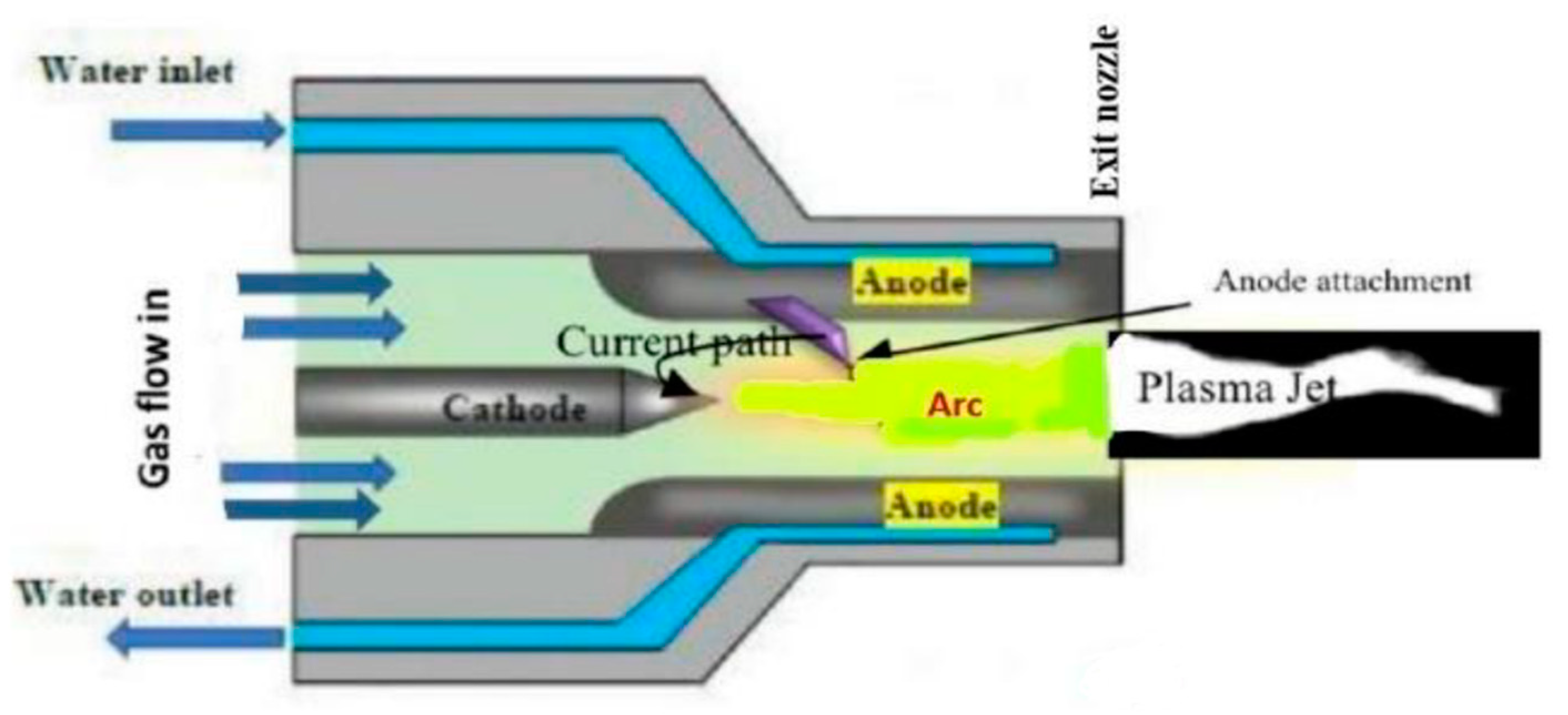
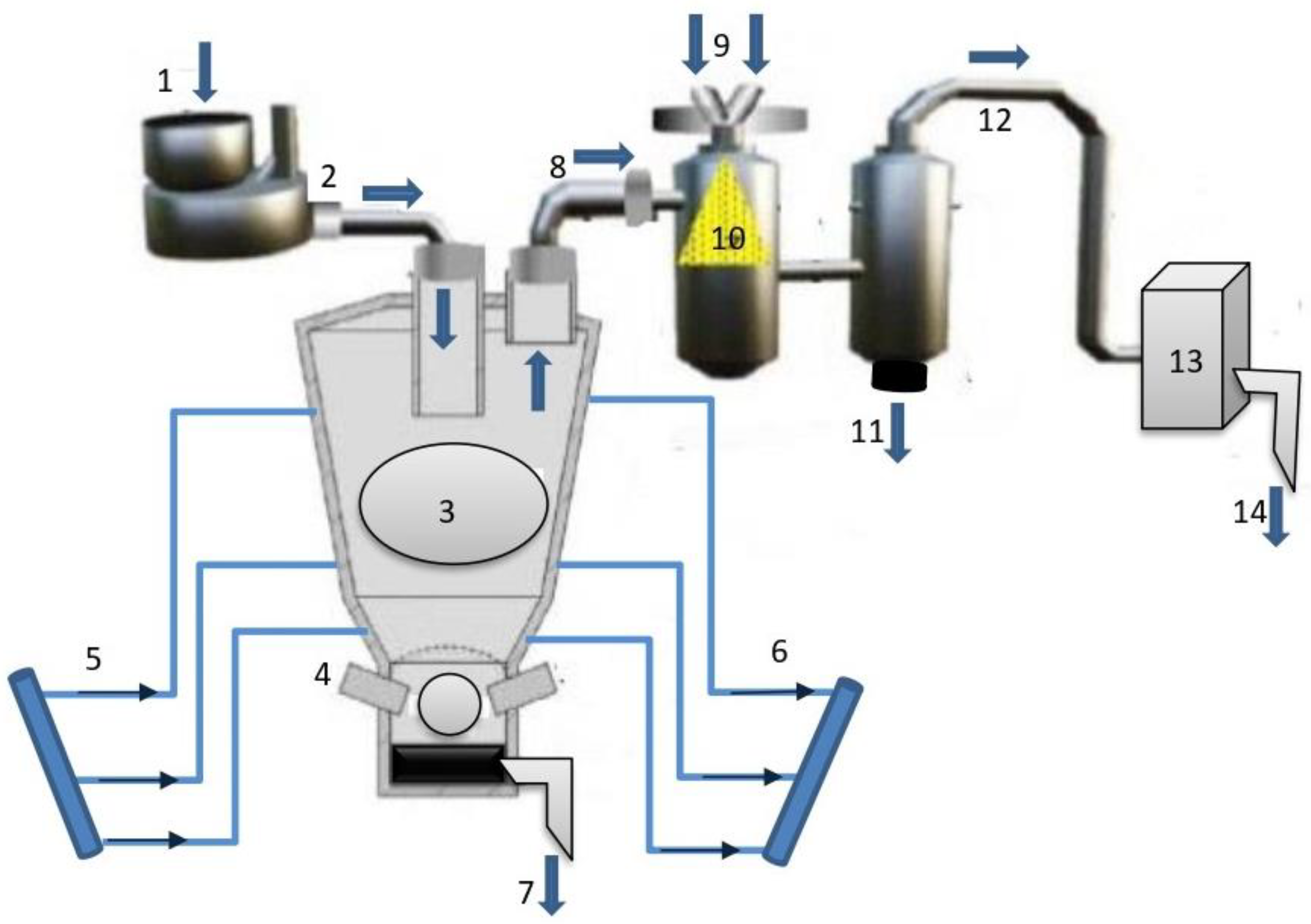

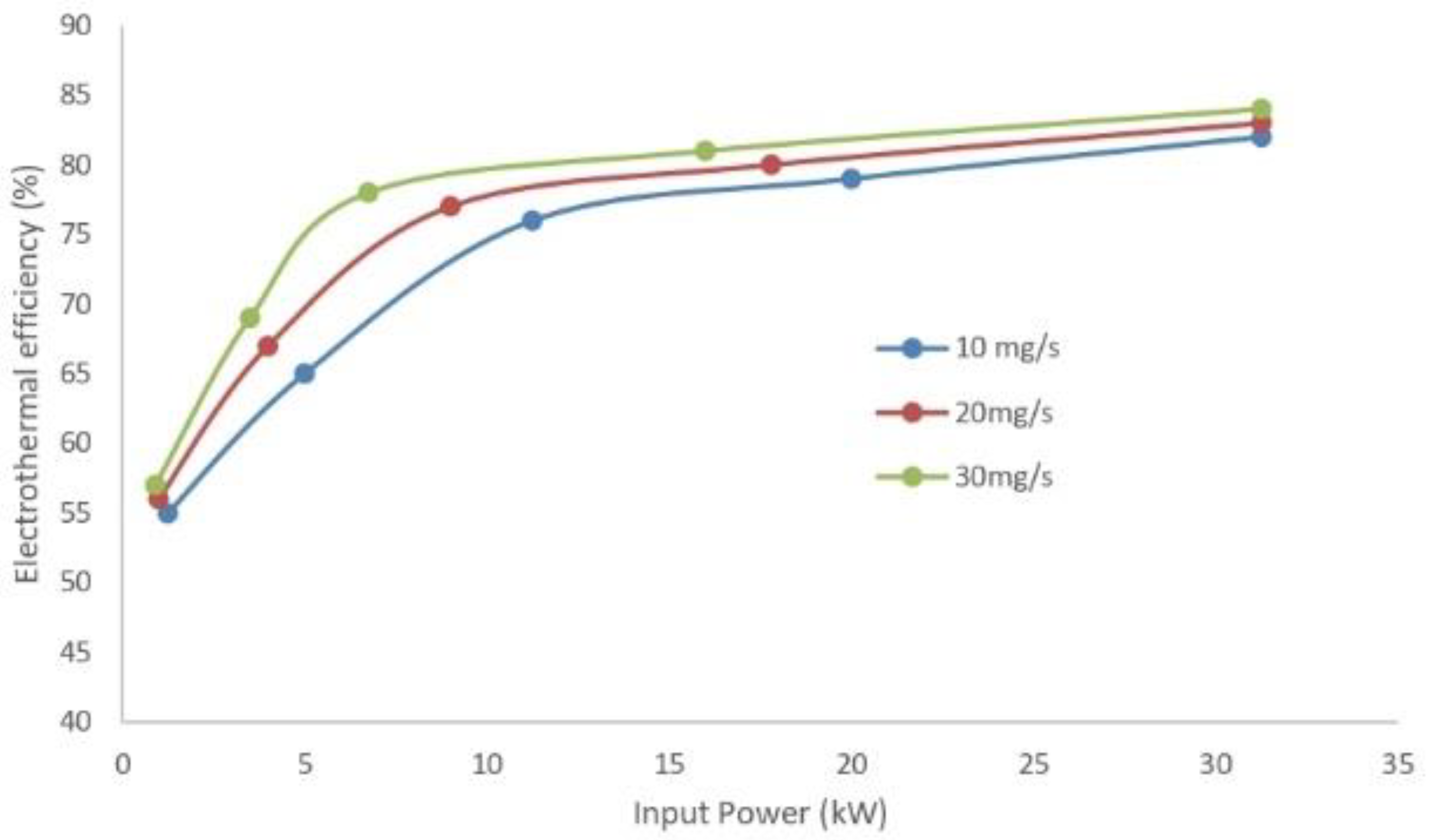
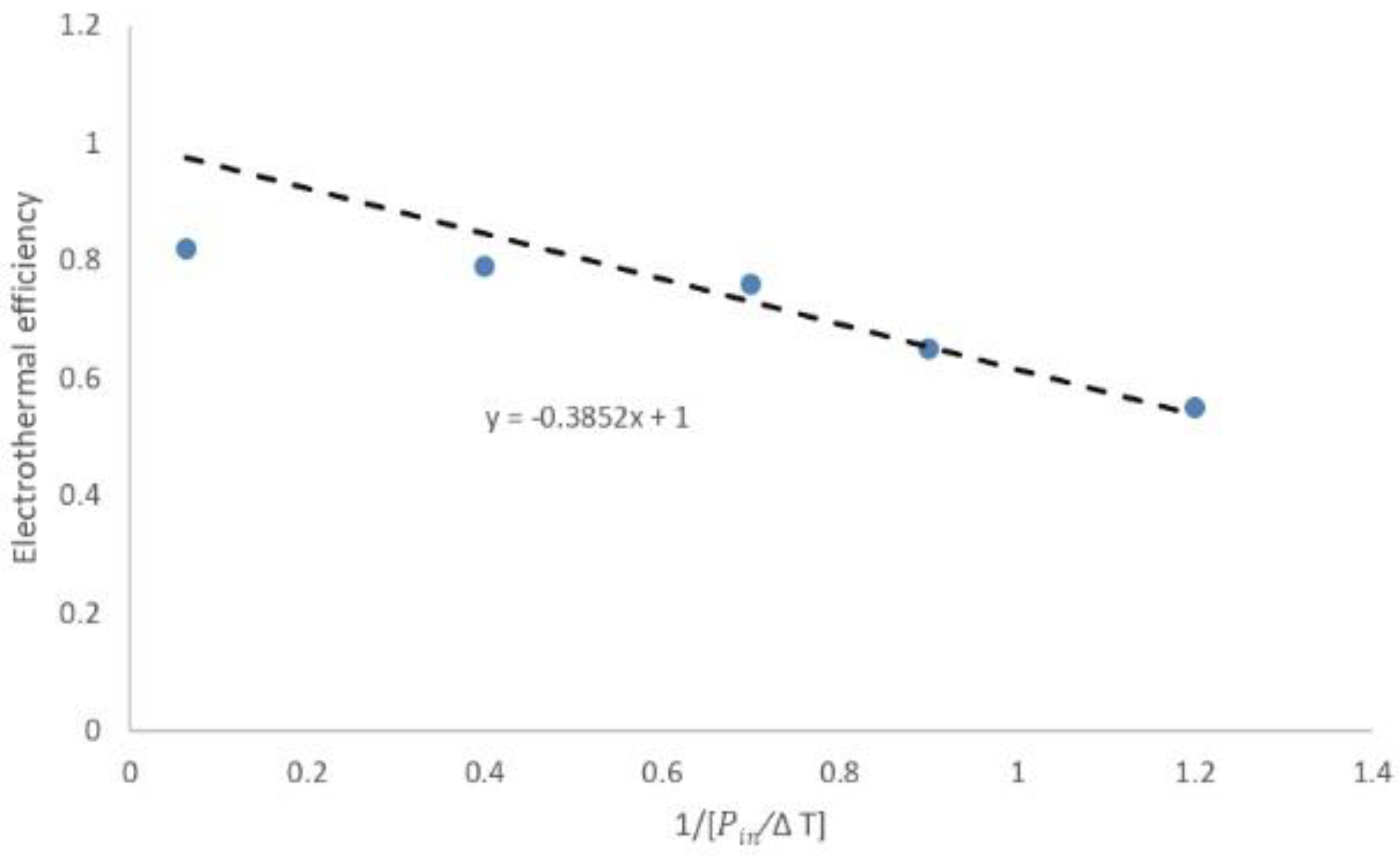
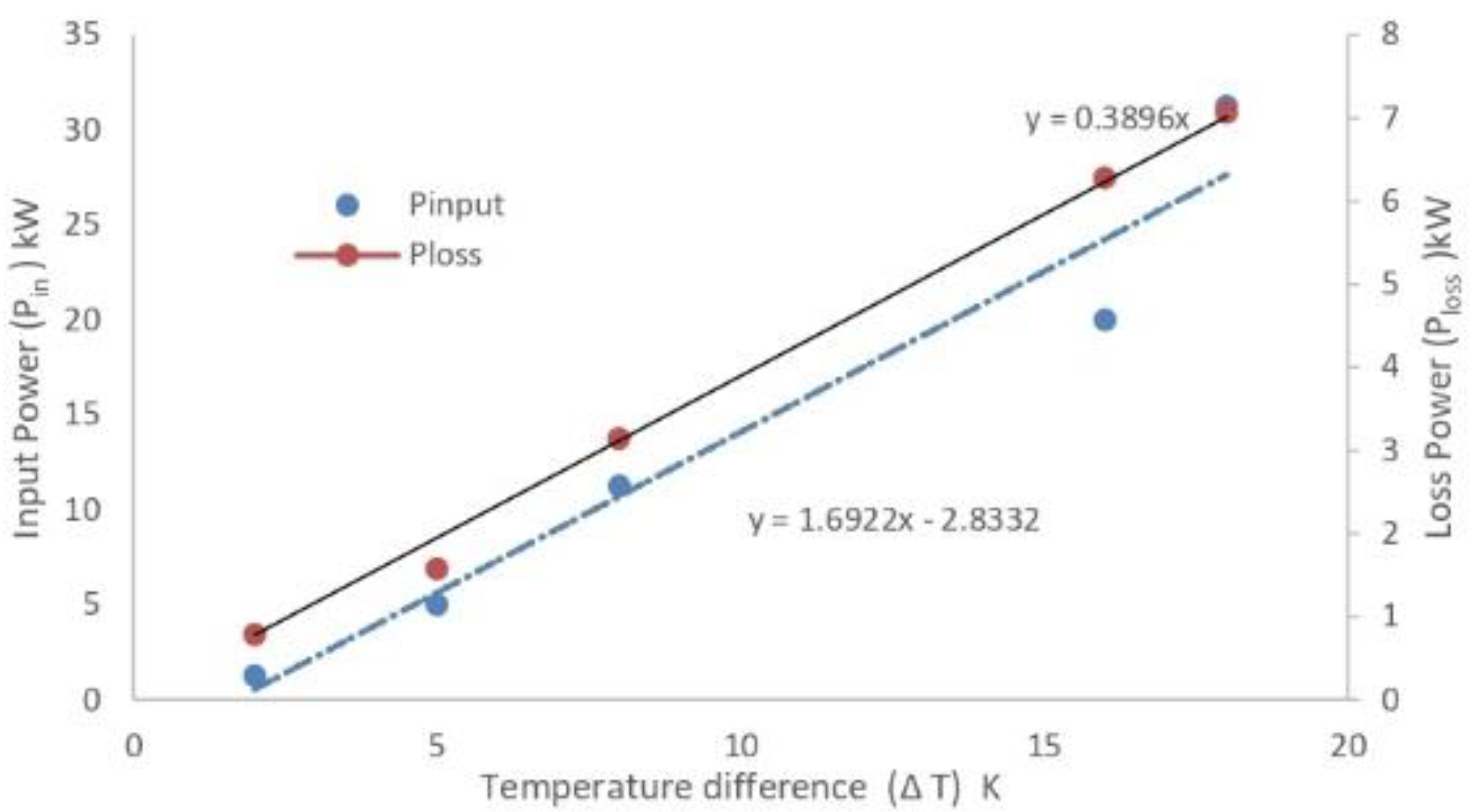


| Parameter | Amount |
|---|---|
| Power | Direct Current |
| The working active gas | Air |
| Vmax | 500 V |
| Imax | 250 A |
| Pmax. out | 125 kW |
| Tplasma jet | 500–1000 °C |
| Air flow rate | 30 mg/s |
| Cooling system | Inlet and outlet water |
| Parameter | Amount |
|---|---|
| Capacity of plasma reactor | 72 × 103 t |
| No. of beds in hospitals | 10,500 |
| The average weight of Md.W. per bed | 270 t |
| The average weight of Md.W in hospitals | 2835 × 103 t |
| Amount of pyrolysis oil extracted | 2268 × 103 t |
| Amount of diesel oil extracted | 1928 × 103 t |
| Number of gallons of pyrolysis oil | 54,500 × 103 gallon |
| Number of liters of pyrolysis oil | 205 million liters |
| Energy produced from pyrolysis oil | 90 × 109 M J |
| Energy produced from diesel oil | 76 × 109 M J |
| The amount of sale of electricity | 21 × 106 MW·h |
| Parameter | Amount |
|---|---|
| The unit cost of electricity sale | 12 USD/MW·h for home (2022) 17 USD/MW·h for factories (2022) |
| Sale profit of electricity | USD 255 million for home (2022) USD 361 million for factories (2022) |
| Price of each liter of pyrolysis oil | USD 0.042 |
| Sale profit of pyrolysis oil liters | USD 8.61 million (2022) |
Publisher’s Note: MDPI stays neutral with regard to jurisdictional claims in published maps and institutional affiliations. |
© 2022 by the author. Licensee MDPI, Basel, Switzerland. This article is an open access article distributed under the terms and conditions of the Creative Commons Attribution (CC BY) license (https://creativecommons.org/licenses/by/4.0/).
Share and Cite
Galaly, A.R. Sustainable Development Solutions for the Medical Waste Problem Using Thermal Plasmas. Sustainability 2022, 14, 11045. https://doi.org/10.3390/su141711045
Galaly AR. Sustainable Development Solutions for the Medical Waste Problem Using Thermal Plasmas. Sustainability. 2022; 14(17):11045. https://doi.org/10.3390/su141711045
Chicago/Turabian StyleGalaly, Ahmed Rida. 2022. "Sustainable Development Solutions for the Medical Waste Problem Using Thermal Plasmas" Sustainability 14, no. 17: 11045. https://doi.org/10.3390/su141711045




